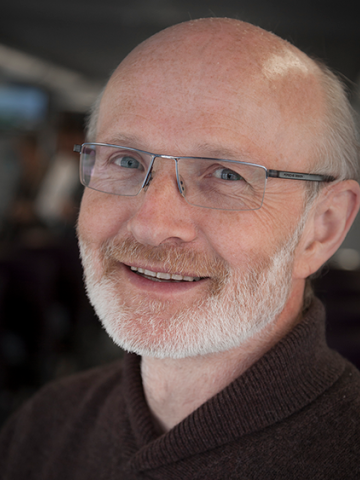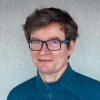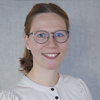Kjell Maroni is R&D Director for the Norwegian Seafood Research Fund and chairs NordForsk’s committee for The Nordic research and innovation programme for sustainable aquaculture.
“Aquaculture is a key research area because it’s a way to produce food for the world’s growing population. Although we currently produce most of the food that we consume on land, there are tremendous opportunities in the around 75 percent of the planet that’s covered by water,” he says.
Aquaculture is already a significant global industry, particularly in the Nordic countries, including Norway, Finland, Denmark, and the Faroe Islands. Norway produces more than half of the farmed salmon in the world. However, the industry faces many challenges when it comes to sustainability, such as seabed pollution, wastewater management, and high fish mortality.

Three paths to a more sustainable industry
The nine research projects funded by NordForsk provide valuable knowledge to help make fish farming more sustainable. Kjell highlights three key results: new types of feed, lower water temperatures, and improvements in recirculating aquaculture systems (RAS).
One innovation is the development of new types of feed which don’t rely on human-grade ingredients. Researchers have investigated the use of waste products from existing industries, including wood processing, to produce new feeds. This approach avoids the use of soy or potential human food as fish feed.
Another project, DigiHeart, is researching the high mortality rate among farmed fish and whether heart diseases are a contributing factor. Anyone interested is encouraged to read (or re-read) NordForsk’s report from the Faroese part of the project: Heart conditions are a possible cause of the loss of millions of farmed salmon. The project suggests that factors like lower water temperature can affect salmon survival.
“Based on DigiHeart, many salmon farmers have become aware that using high temperatures too early isn’t beneficial. As a result of research findings like those from DigiHeart, many are now producing fish roe at slightly lower temperatures than before. I’m convinced that this will lead to positive results in terms of higher survival rates, fewer injuries, and better health for the salmon,” says Kjell.
The third area of research results is related to RAS facilities and how they can be made more sustainable. RAS facilities for smolt and rainbow trout can now utilise energy more efficiently and recirculate water more effectively than in the past.
Headlines about the aquaculture industry
The new knowledge from research is welcomed by the industry and helps to provide a more nuanced view of the issues that often make the headlines. Kjell refers to most of the stories that proliferate in the media and among the general population as myths.
“The use of antibiotics in fish is almost negligible, but changing this narrative in the media and among the public is extremely difficult. The story or myth that farmed salmon is full of antibiotics is not true. In Norway and in the Nordics in general, we’re good at producing fish with minimal use of antibiotics, thanks to research like HappySalmon and DigiHeart.”
Close collaboration between research and industry
Kjell believes that one reason why NordForsk’s aquaculture research projects have such a significant impact on fish farming producers is the close collaboration between researchers and the industry.
“Fish farmers are more likely to use research results when they’ve been involved in the research process and have contributed ideas about what questions need answers. Researchers may have found good and exciting results, but industry stakeholders will often ask if it has been researched or tested in practice. The closer that industry is linked to research, the greater the chance that the results will be put to use, and the research will be successful. Ultimately, researchers must be responsible for research, as we don’t want industry-driven research.”
In the aquaculture projects funded by NordForsk, industry partners include Bakkafrost, the largest salmon producer in the Faroe Islands, Arctic Fish in Iceland, and FjordAlg in Norway.
Nordic aquaculture sets the standard
At the time of this interview, Kjell had just returned from Aquaculture Europe held in Vienna, and was on his way to Chile, one of the world’s largest fish farming countries. When asked what sets Nordic aquaculture production apart from the rest of the world, he pointed to the collaboration between researchers and the industry.
“At the aquaculture conference in Vienna, it became clear to me that there’s a considerable difference between Southern and Northern Europe. In our region, there’s a much closer connection between research and industry compared to Southern Europe. Many university environments in non-Nordic countries are more interested in the research dimension, while Nordic researchers are focused on applying their research results in the industry to make it more sustainable and efficient,” he explains.
Another difference is that Nordic fish farming production is highly industrialised, consolidated, and mature. The facilities are generally much larger than in the rest of Europe. For example, in Germany, there are around 3,000 trout producers, each producing only a few tons annually, says Kjell.
“Another difference is that in the Nordic countries, there’s a close dialogue between research, industry, and government, and all three parties work together to develop the industry. Open dialogue is extremely important. It means that industry stakeholders can go to researchers and say that they have a problem with a particular issue, and researchers can address it because research funding can be allocated. The other important aspect is that the knowledge base and regulations around the industry are grounded in reality and not just in research.”



